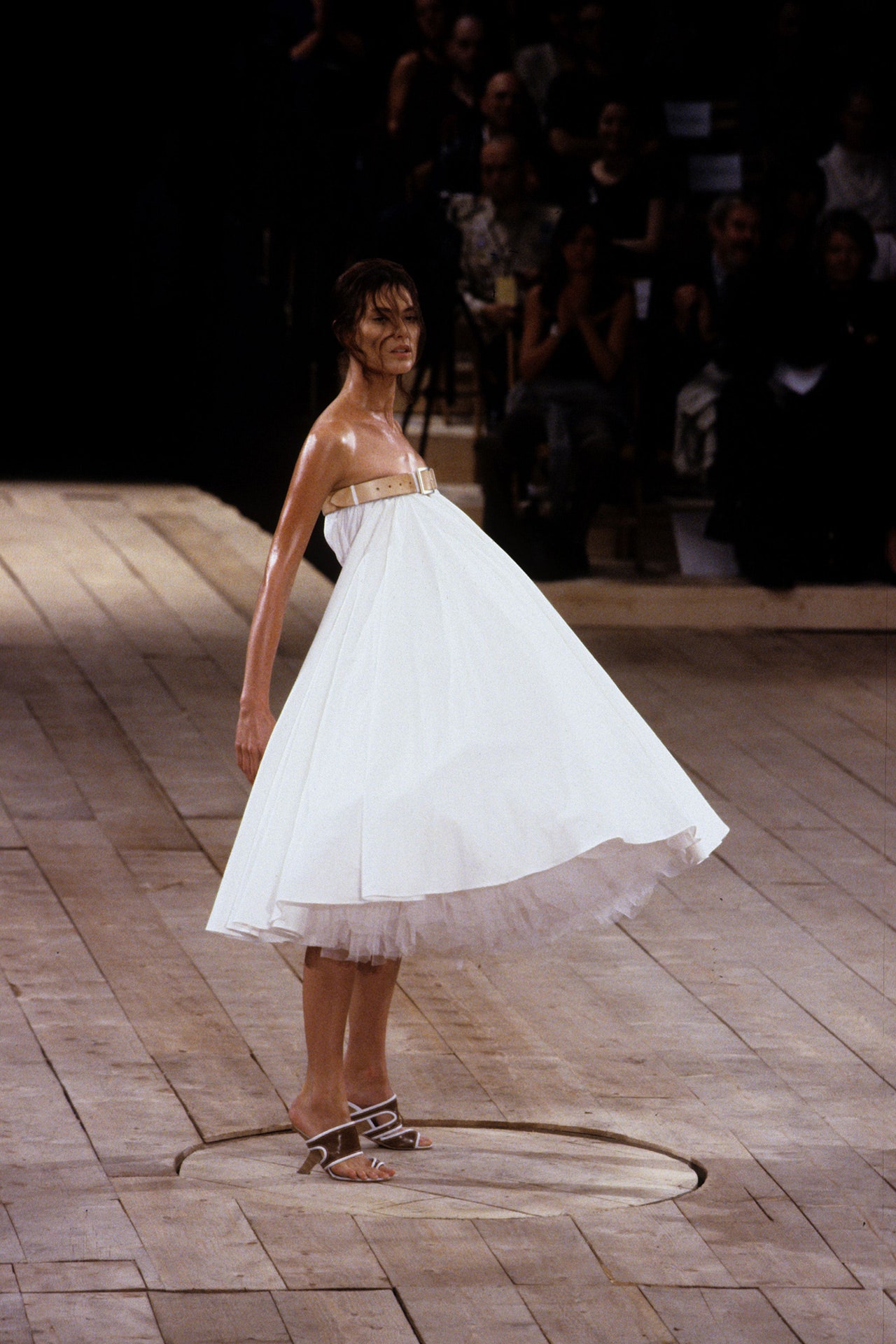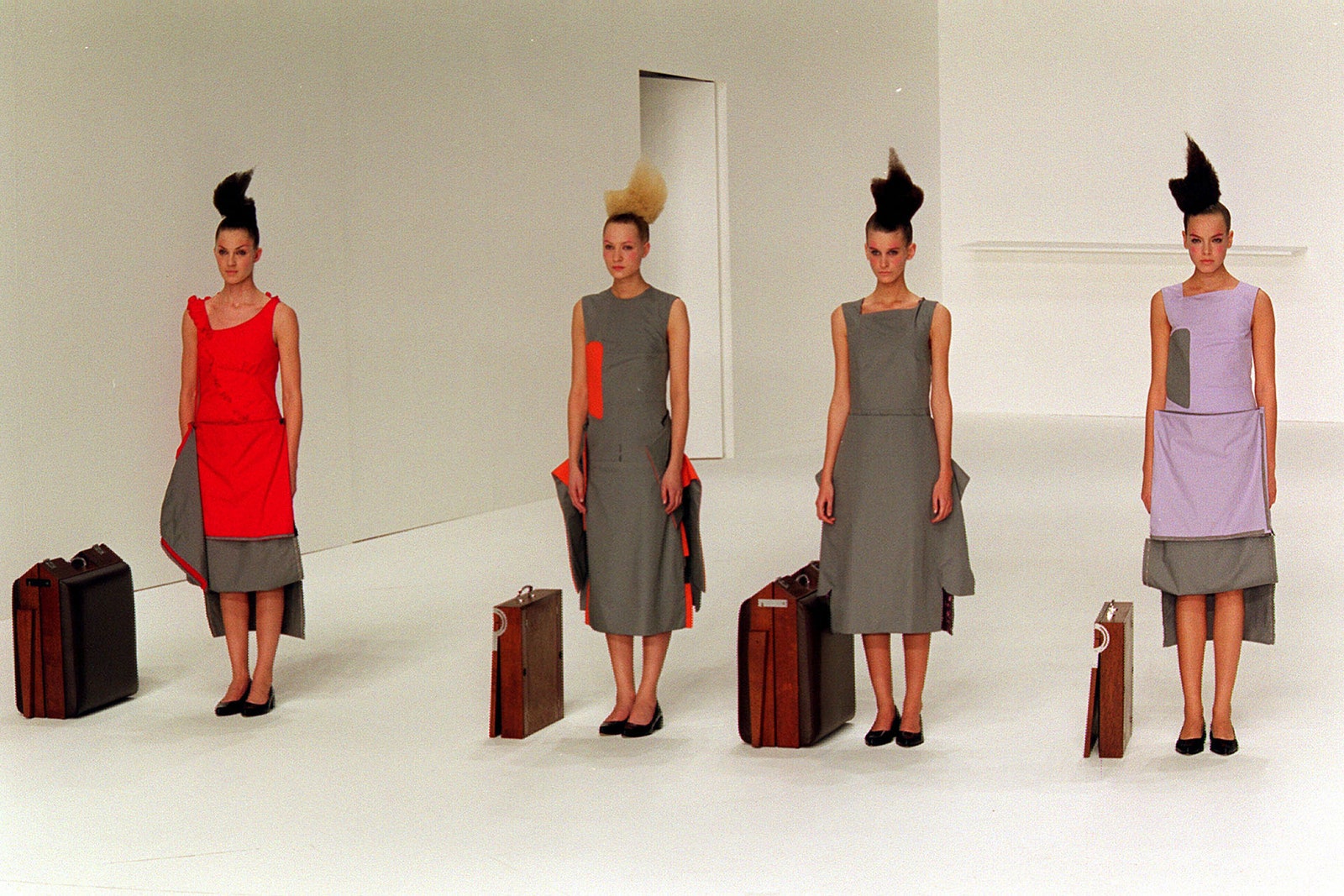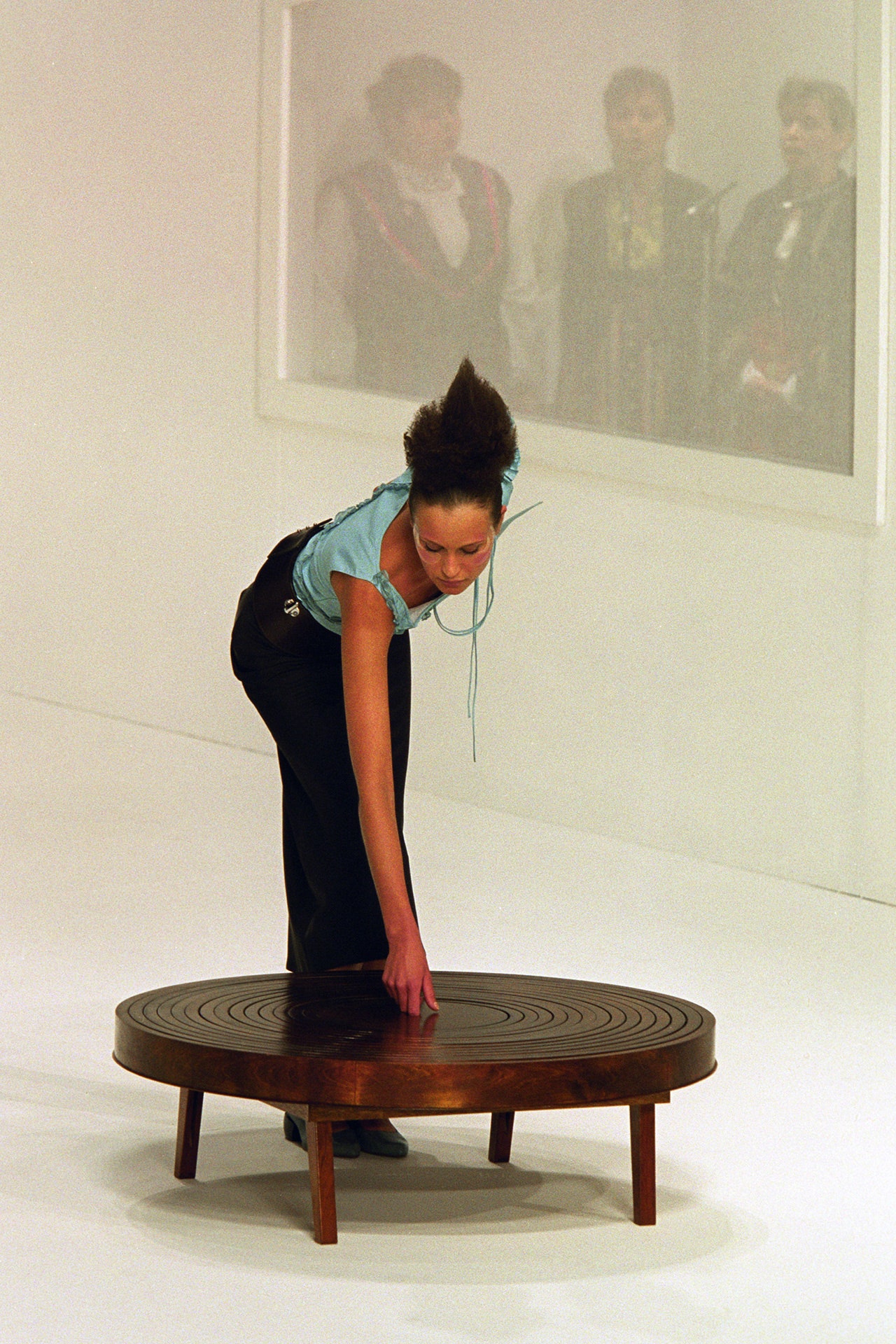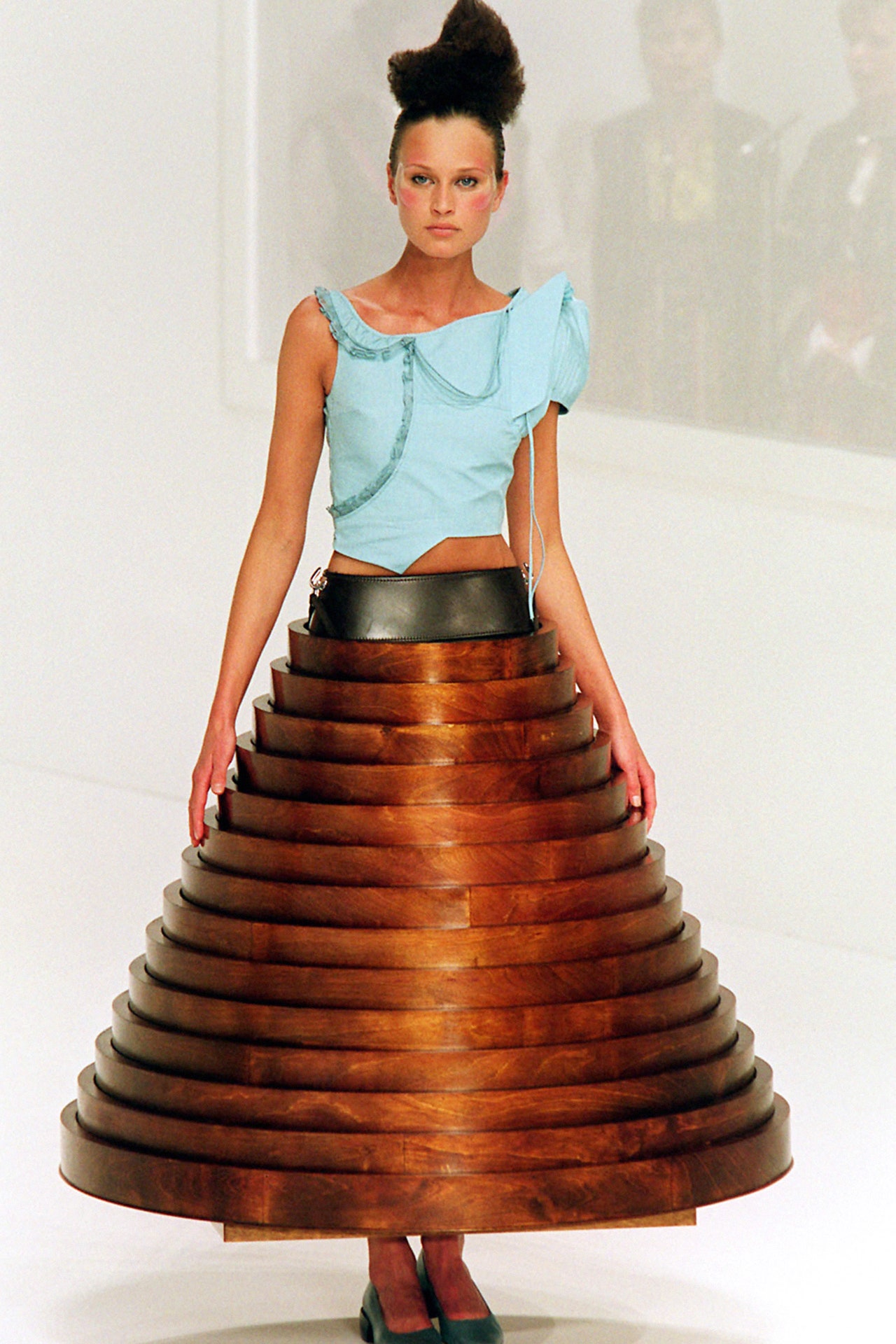“Inventing the Runway” traces the evolution of the fashion presentation from the salons of Charles Frederick Worth to the CD-ROMs of Helmut Lang—with some of the greatest catwalk shows ever staged reimagined in London’s immersive gallery space Lightroom, in King’s Cross. Here, a closer look at five of the history-making collections projected on its 12-meter-high walls.
Alexander McQueen, Spring/Summer 1999
Staged in Gatliff Warehouse, a disused bus depot near London’s Victoria station, Alexander McQueen’s 13th show was inspired by everything from the Arts & Crafts movement to the prosthetic limbs developed at Queen Mary’s Hospital during The Great War. Paralympic athlete Aimee Mullins opened the show wearing a pair of cherrywood legs that recalled the carvings of 17th-century sculptor Grinling Gibbons, while Shalom Harlow closed No. 13 with a finale that still lingers in editors’ minds. Stepping onto a rotating disk in a white trapeze dress, the model stood in place as two robots brought in from a car manufacturing plant sprayed her aggressively with black and Brat-green paint. McQueen later claimed the performance had been inspired by Rebecca Horn’s High Moon (1991), and told ArtReview that it took a full week to program the robots—and yet he refrained from giving Harlow any instructions about how to respond to them on the night. “Alexander and I didn’t have any conversation directly related to this particular piece and to creating this moment within this show,” she recalled ahead of the opening of his “Savage Beauty” retrospective. “I like to think that he wanted to interfere as little as possible and allow me to have the most genuine, spontaneous experience as possible.”
Hussein Chalayan, Fall/Winter 2000
“My family did experience displacement,” British-Cypriot designer Hussein Chalayan recalls in “Inventing the Runway.” “They had to leave their homes. And then I was, you know, wanting to explore that idea of how you protect your possessions, how you may also want to carry them if you’re leaving.” For fall/winter 2000, that exploration took the form of a presentation at Sadler’s Wells in London’s Islington. The theater’s stage had been rearranged to resemble a living room, around which models walked in shift dresses, ruffled skirts, trench coats—and, finally, the furniture itself. “Chalayan’s finale was quite astonishing,” wrote Plum Sykes in a Vogue review at the time. “Four models clad in chic gray shift dresses approached the set of chairs, removed the covers and literally put them on. The chair covers became perfect versions of the shifts they were already wearing. The last model stepped inside the table, lifted it up, and it transformed into a wooden skirt (the real fashion insider will remember Chalayan’s graduation show included a wooden skirt, too). Finally, the chairs folded into suitcases, which were carried off the stage; the television screen disappeared; and we were left looking at an empty room. If it sounds like magic, that’s because it was.”
Tom Ford, Spring/Summer 2011
When debuting his first womenswear collection in six years, Tom Ford rebelled against the immediacy and uniformity of fashion shows in the aughts. He dreamt up the concept for his spring/summer 2011 presentation, held in his Madison Avenue store, on a Eurostar—deciding to eschew models in favor of 32 “icons,” from Marisa Berenson to Beyoncé to Stella Tennant. “I wanted all different ages, I wanted all different body types, I wanted different characters and different personalities,” he told WWD in the wake of the show, photographs of which were prohibited. “I literally designed those clothes for those women—took their measurements, thought about them, thought about what they wore.” Beyoncé—then on hiatus before recording 4—wore a silver jacquard dress, with Ford narrating her turn on the runway for the 100-odd editors present. When The New York Times asked her afterwards whether she thought twice about being in the show, she replied immediately: “Absolutely not; look at these clothes!”



















